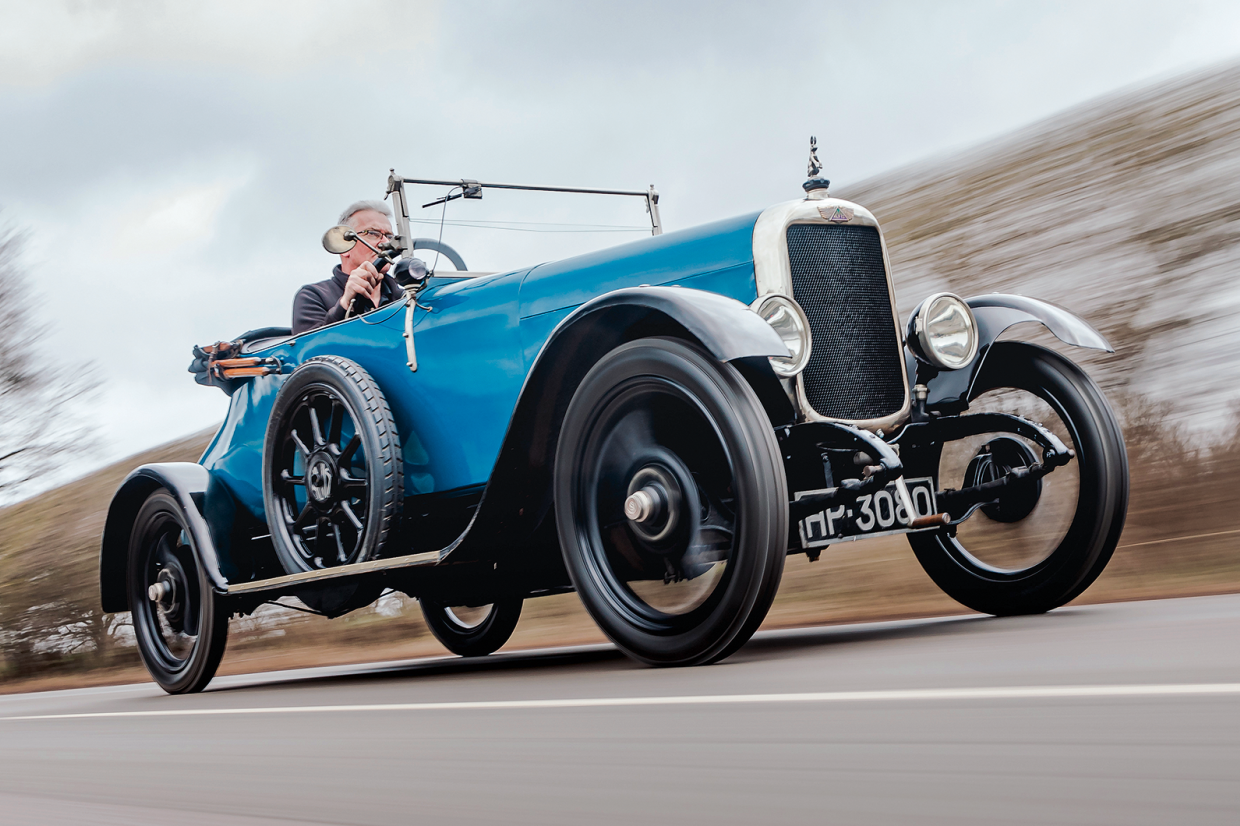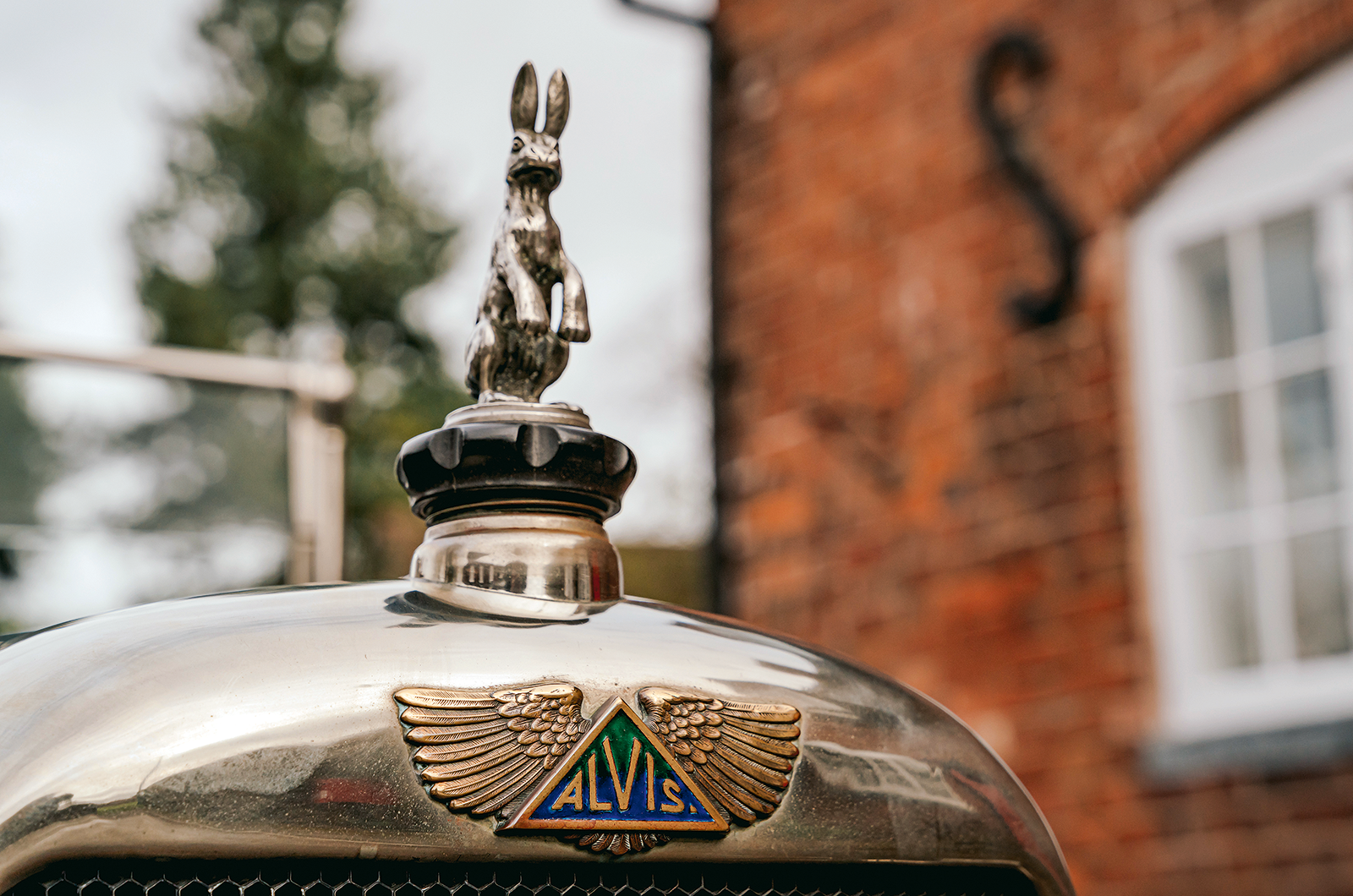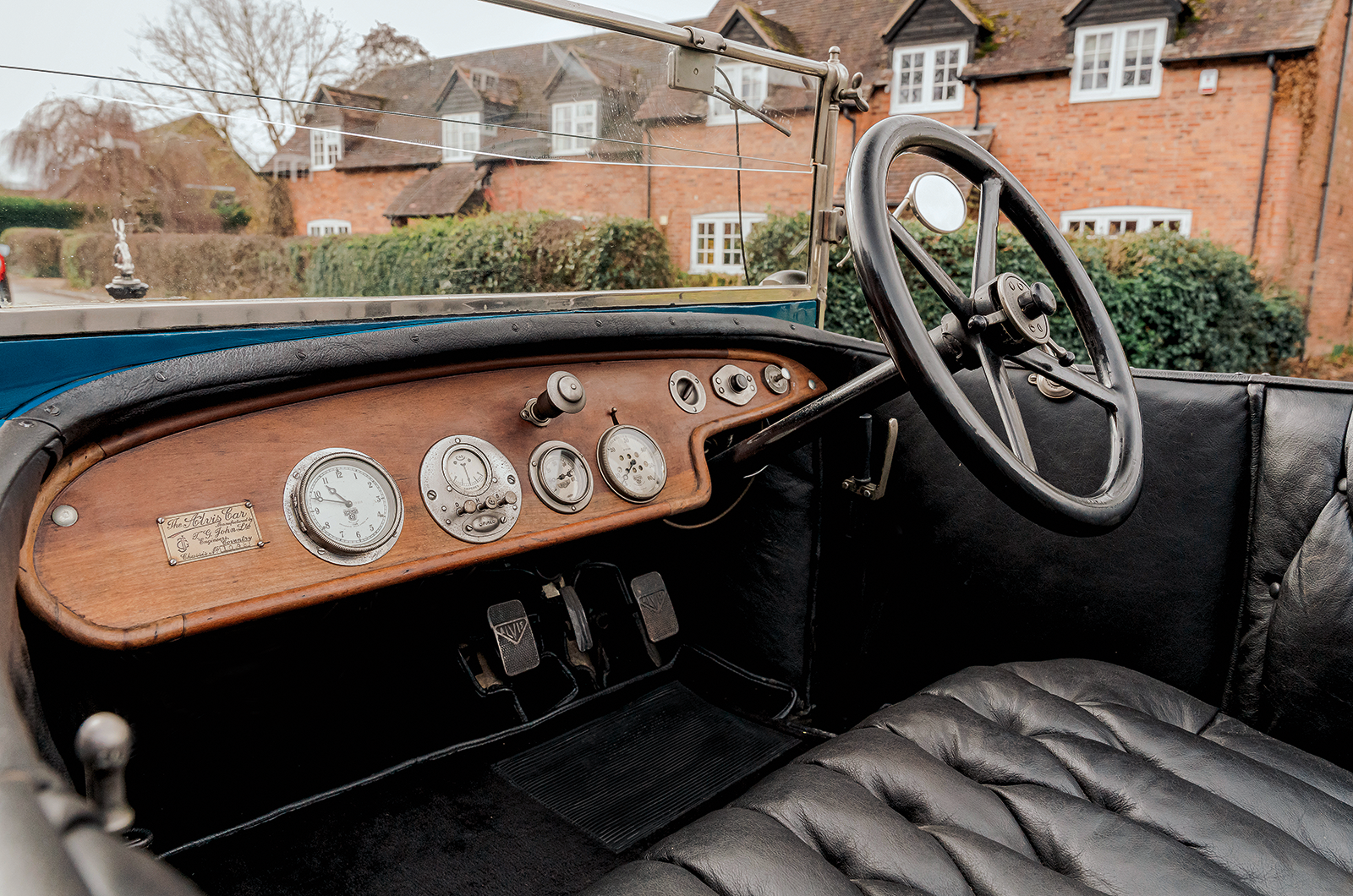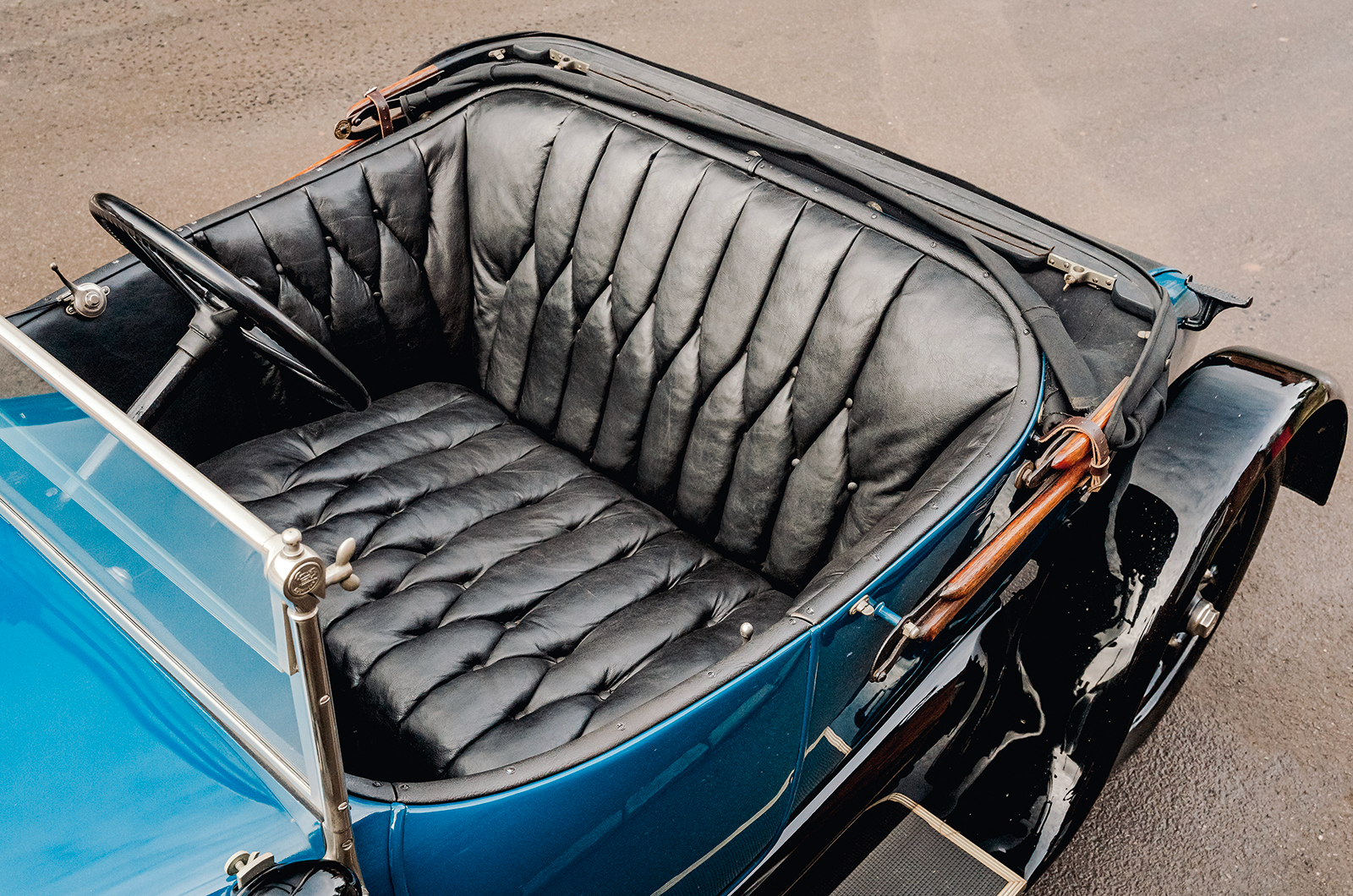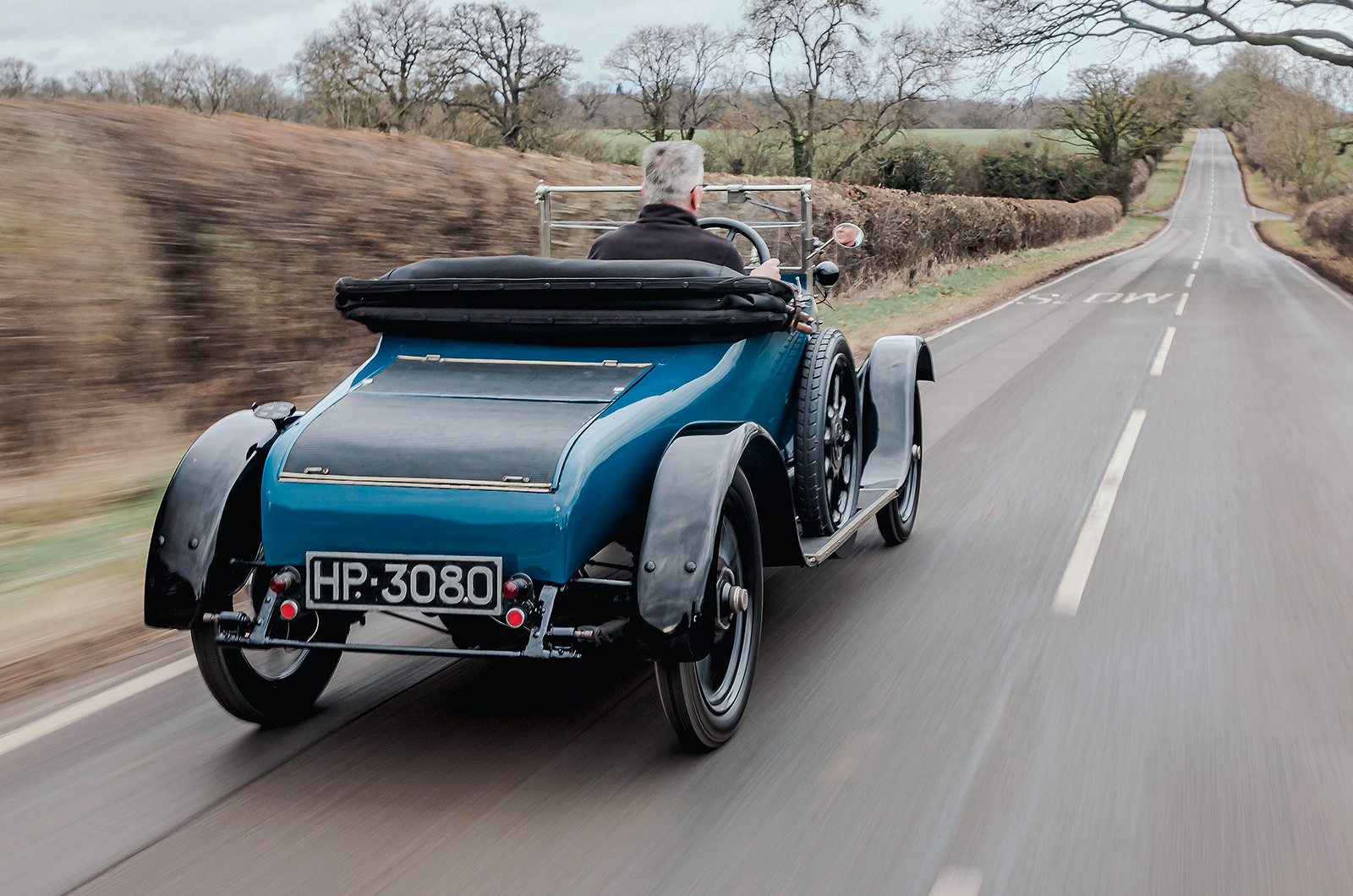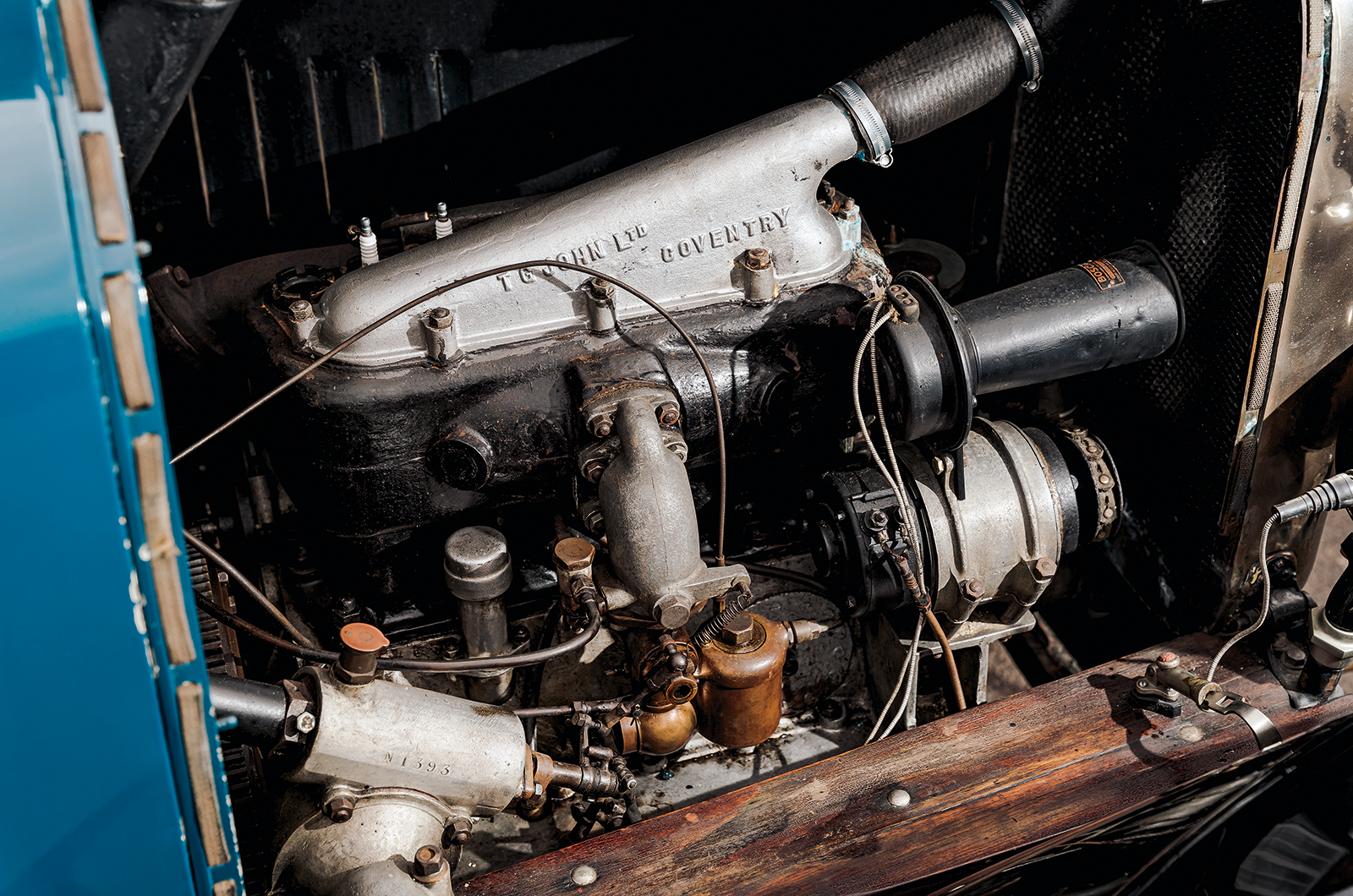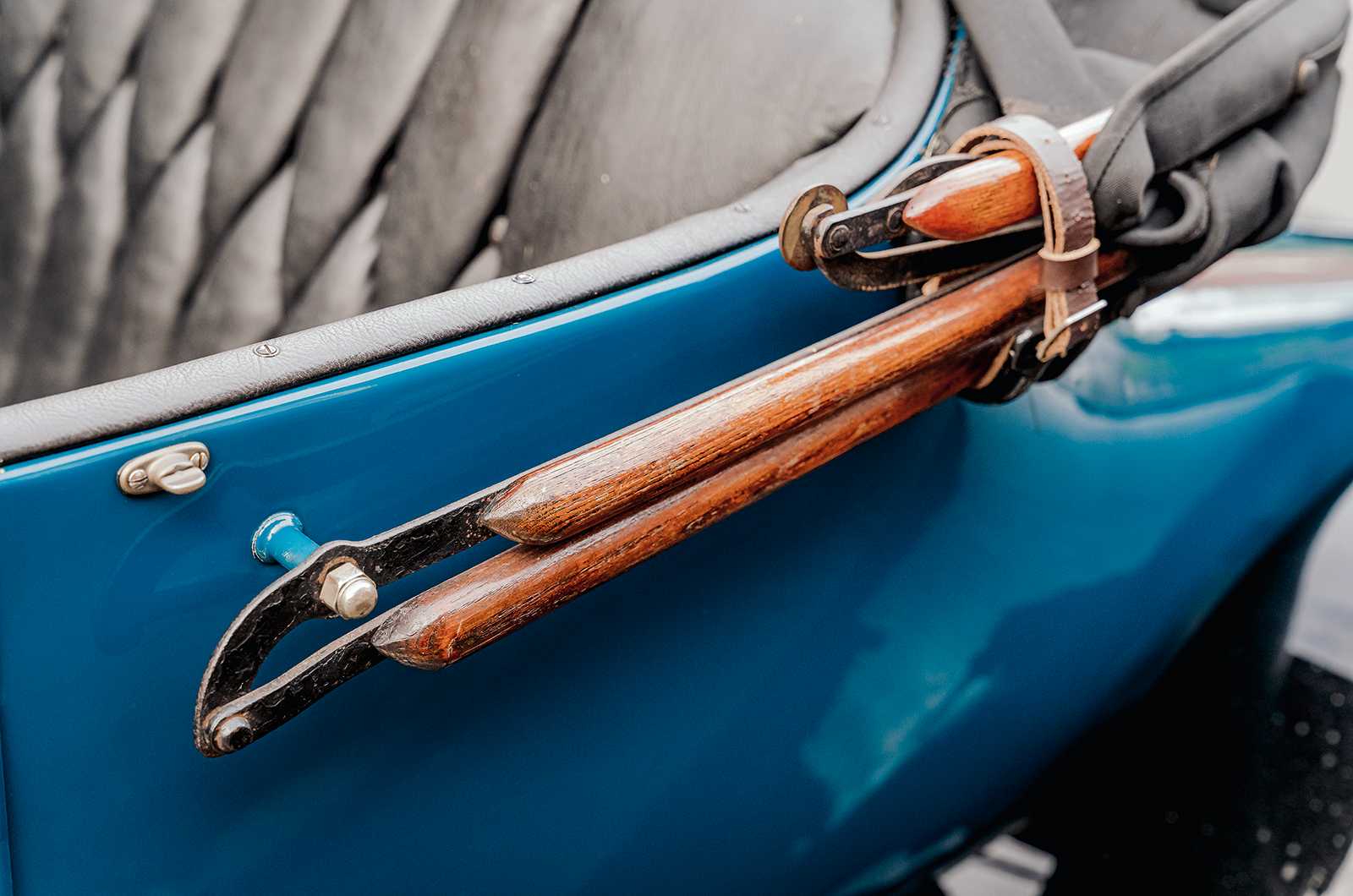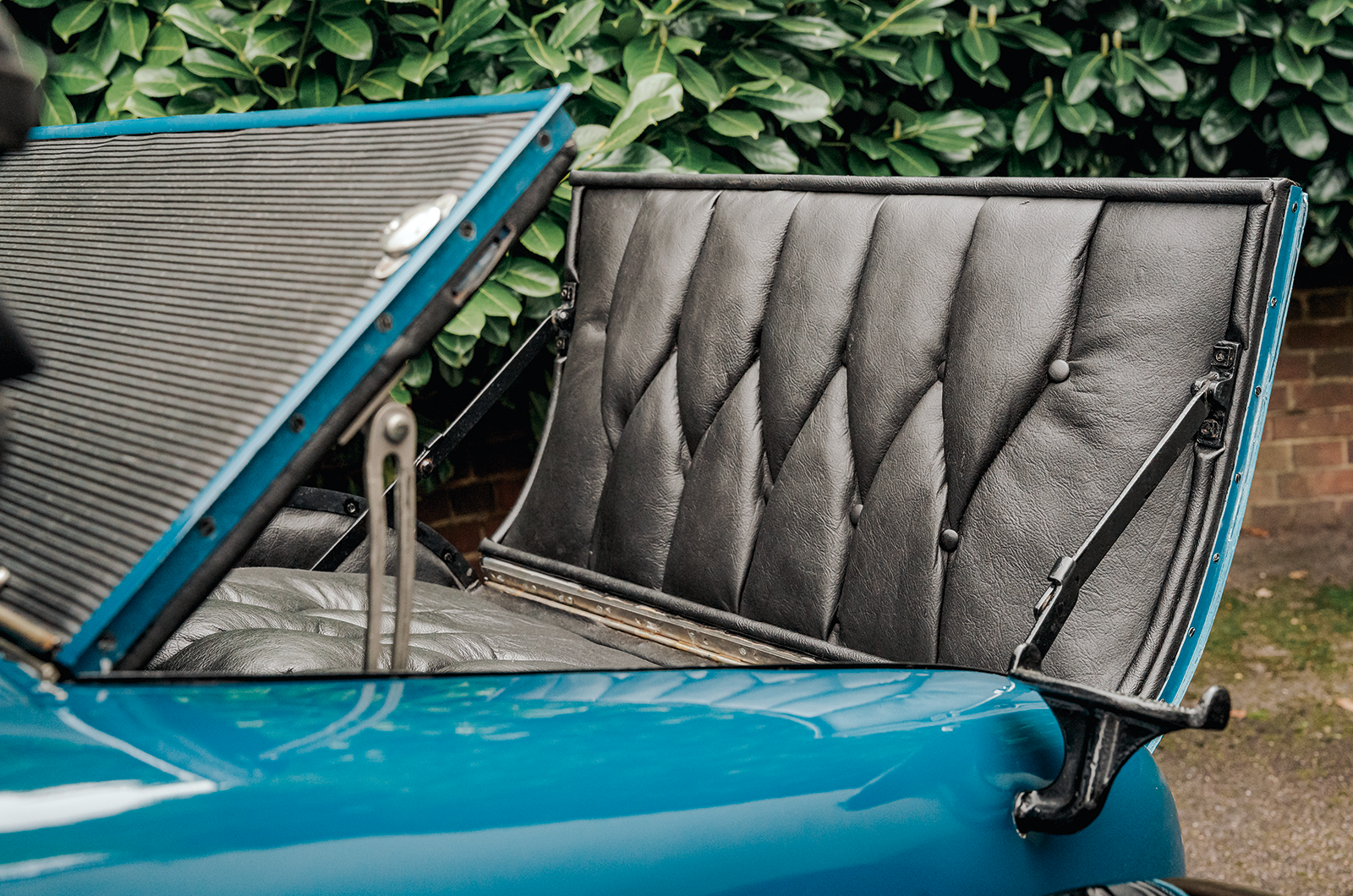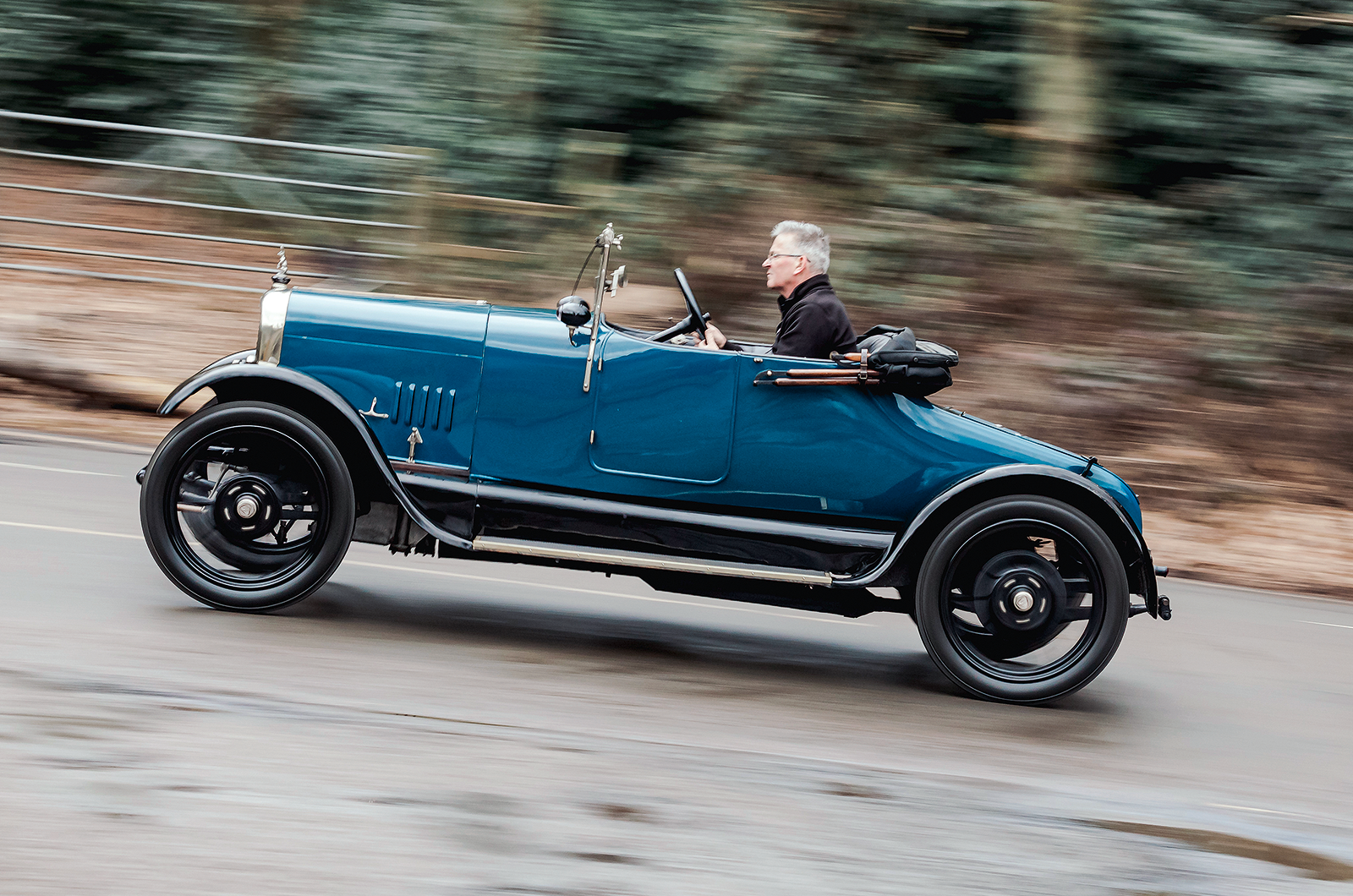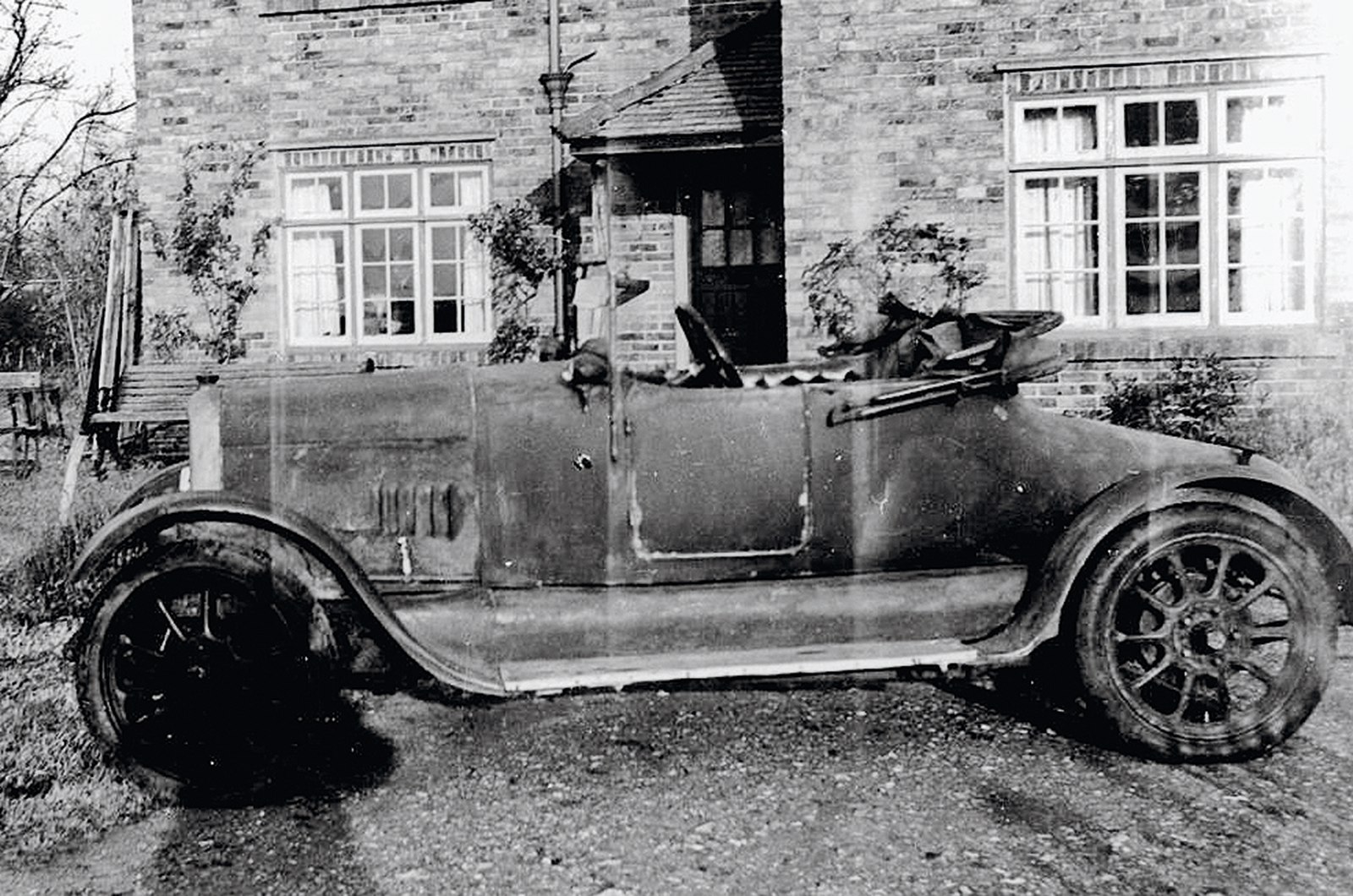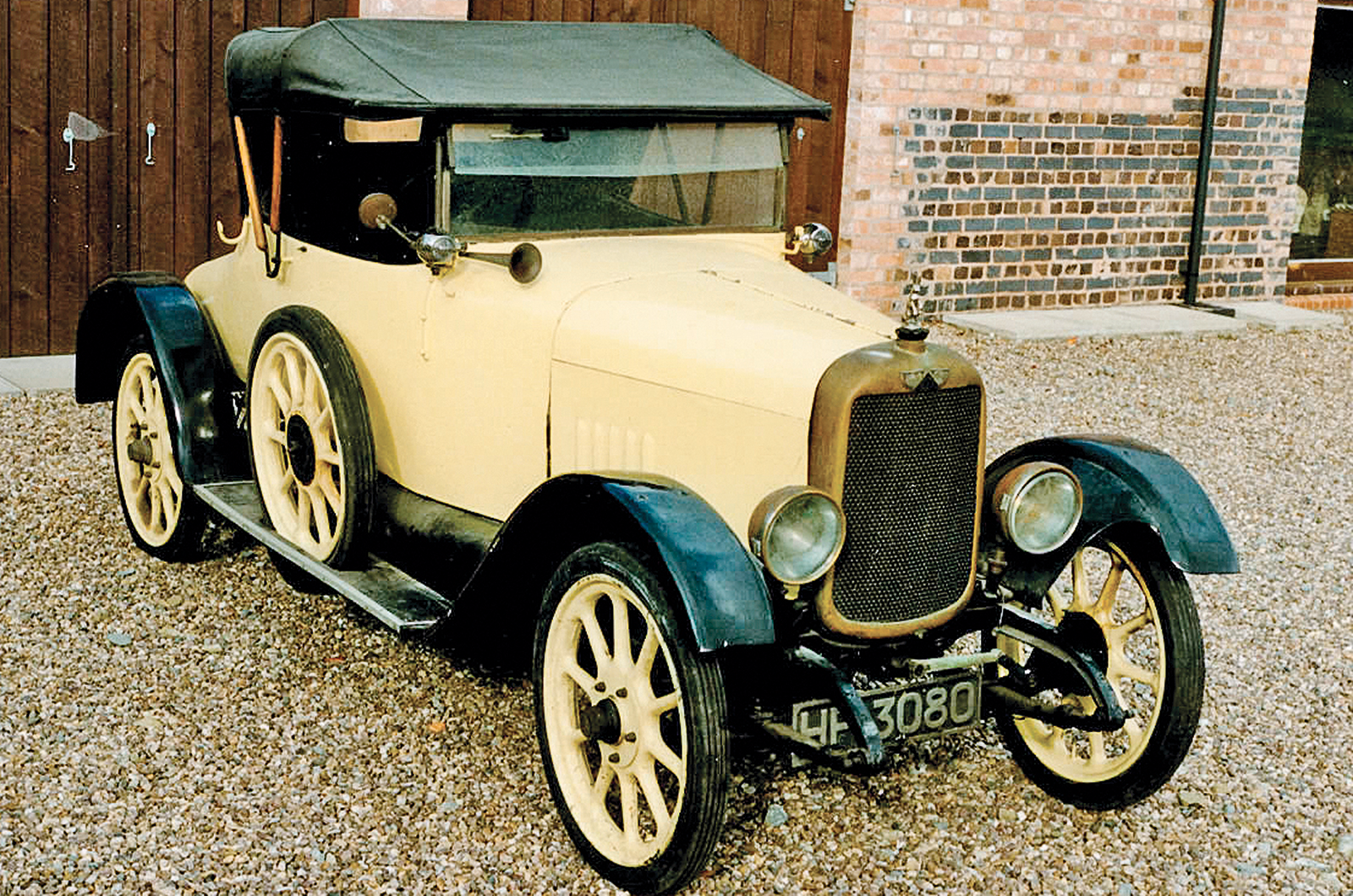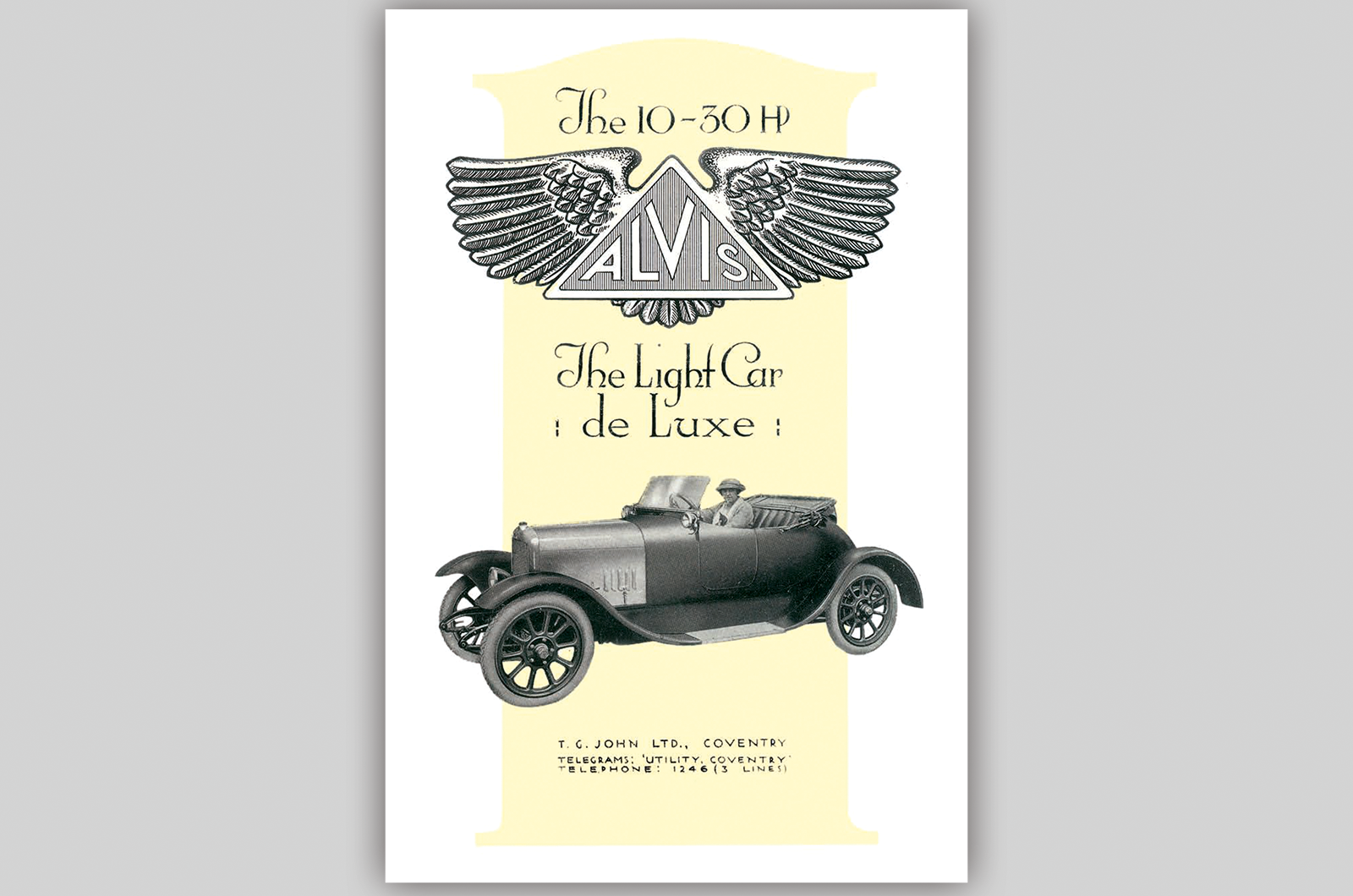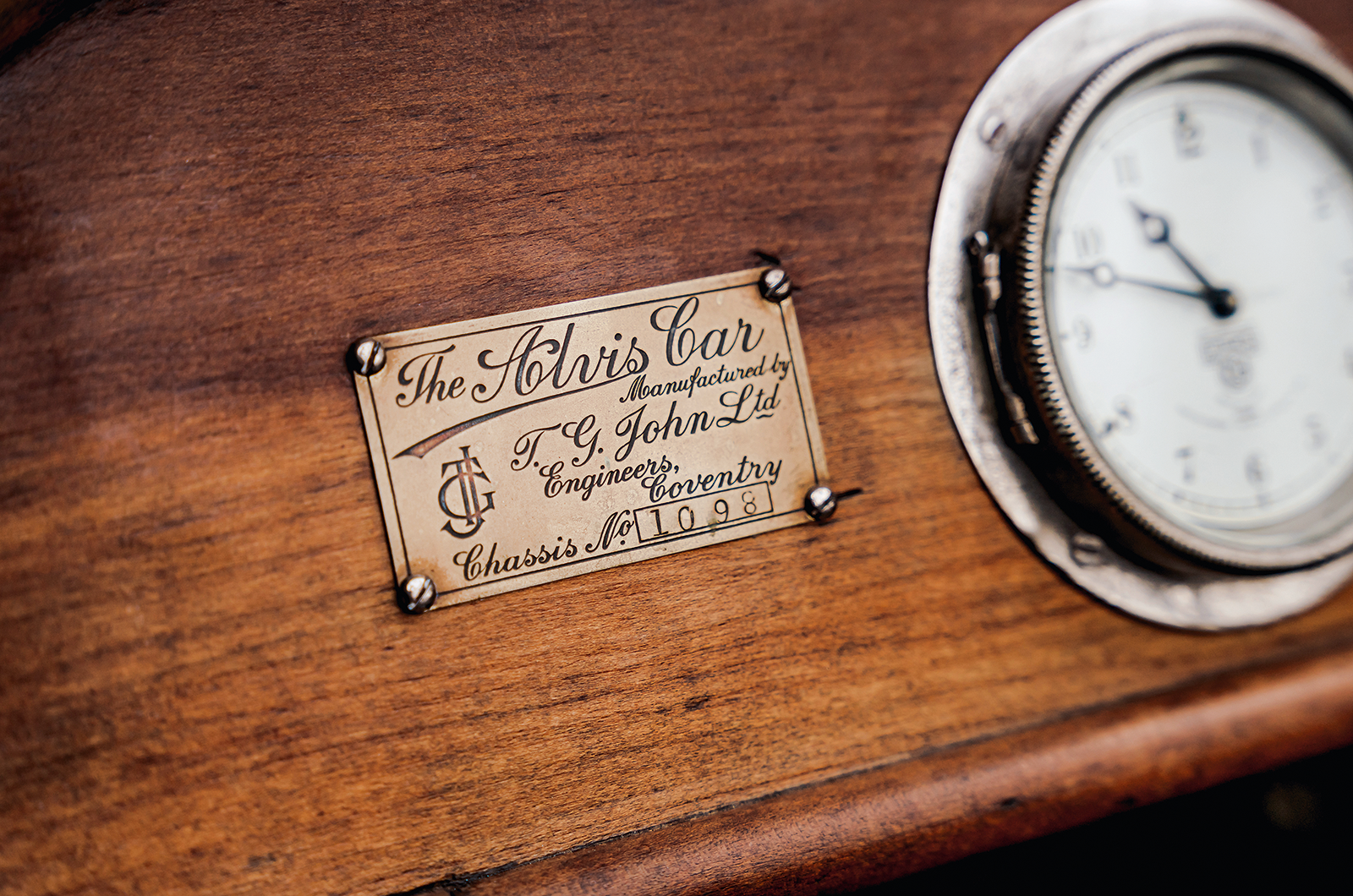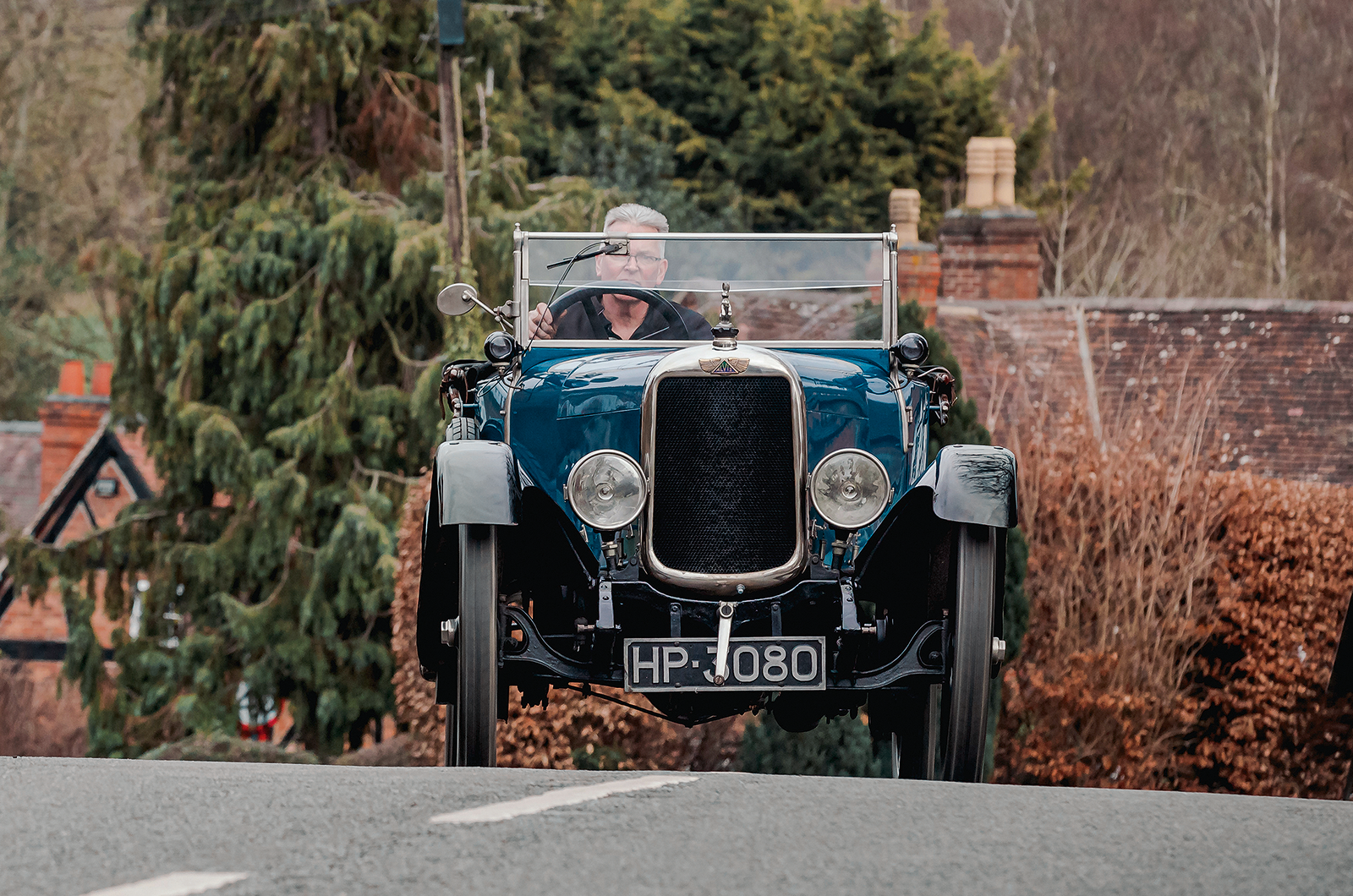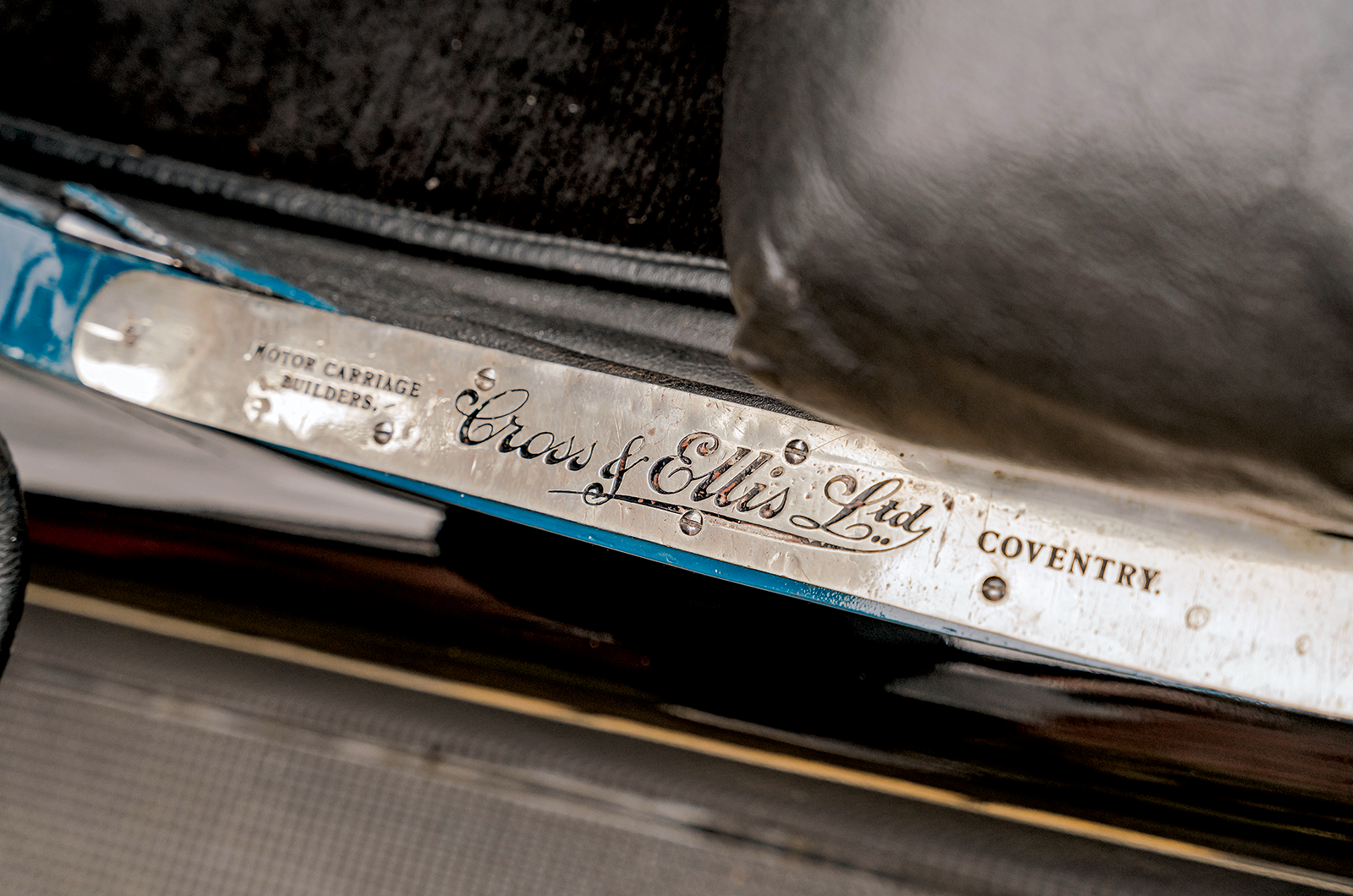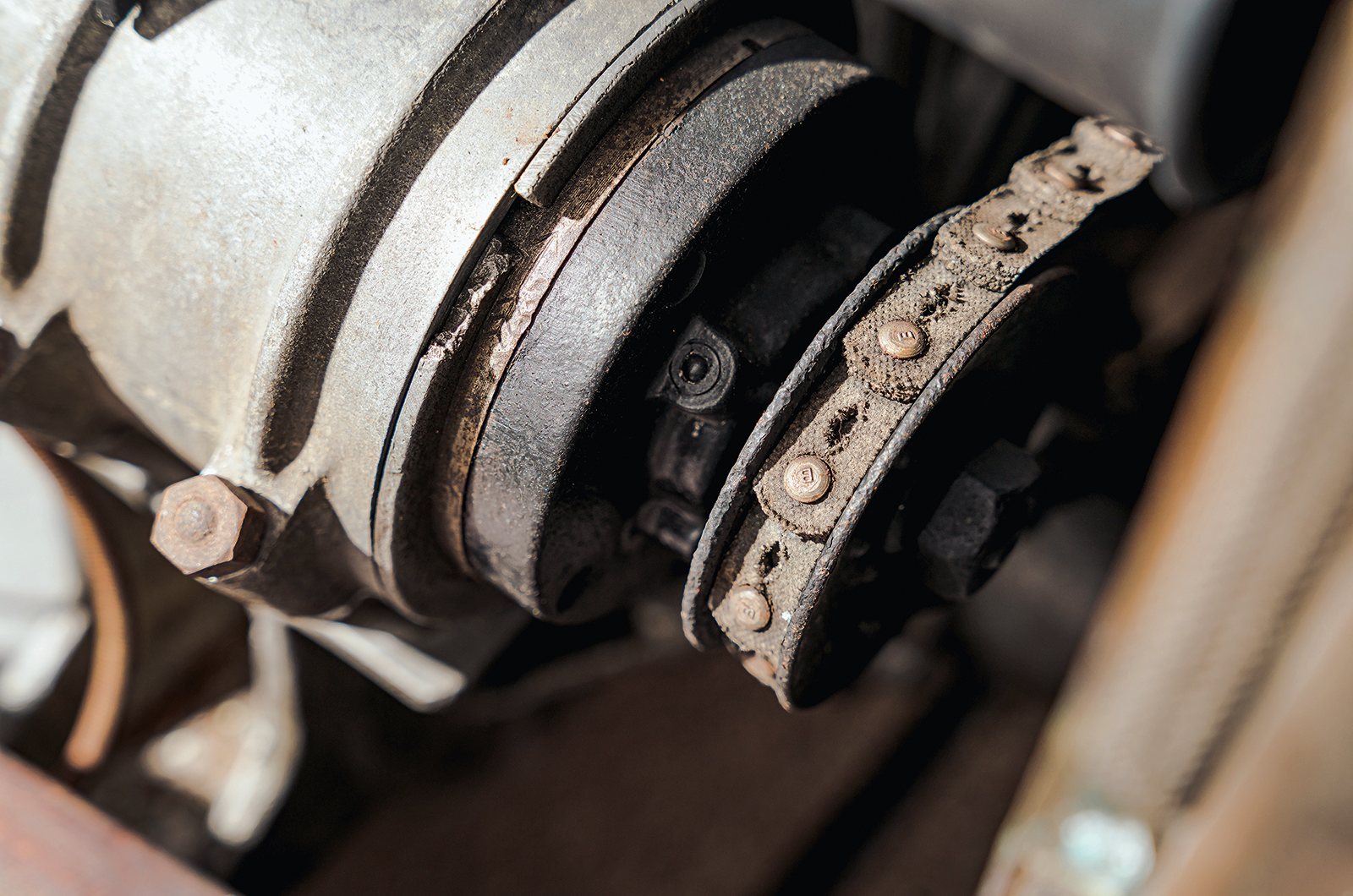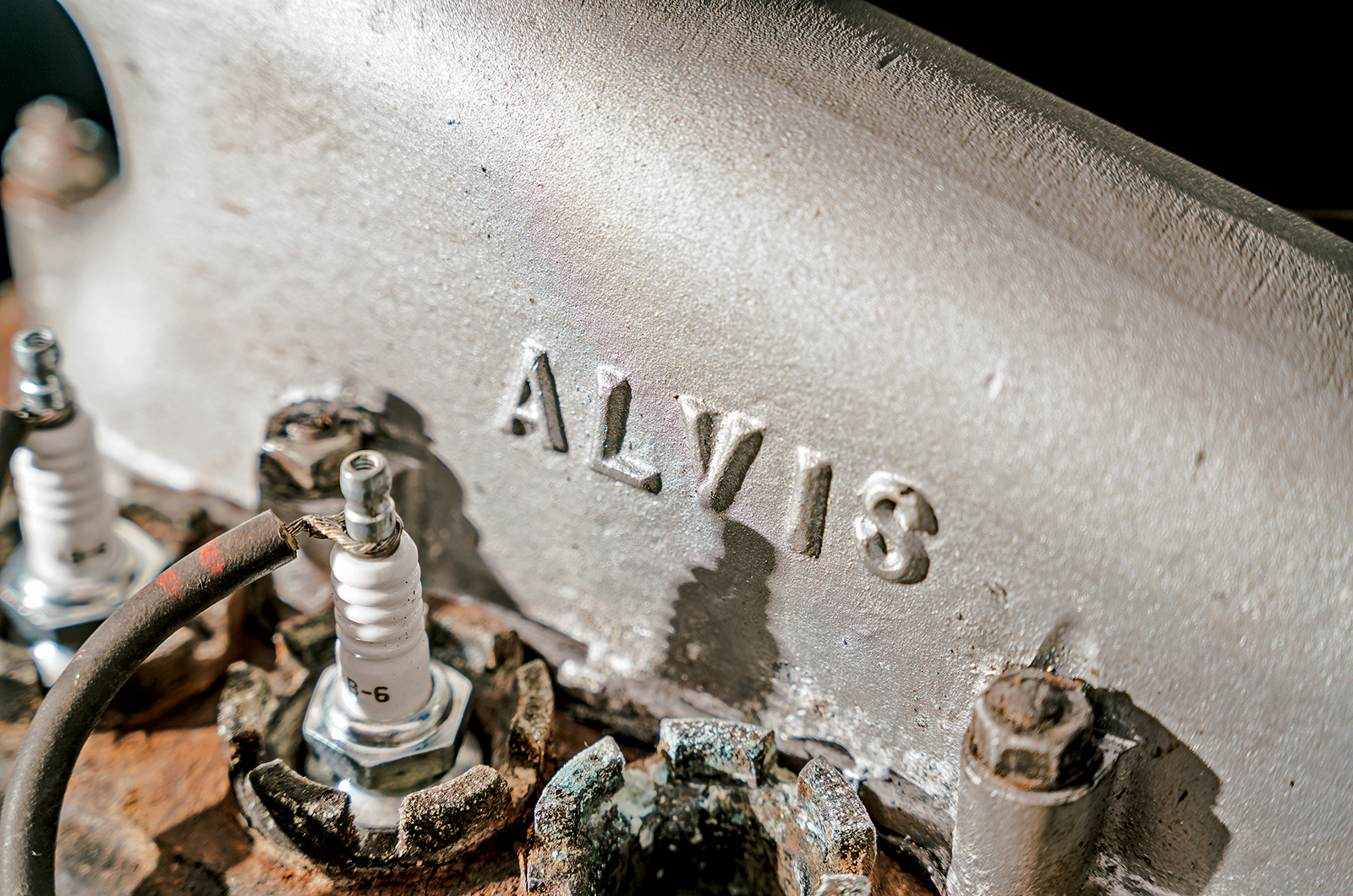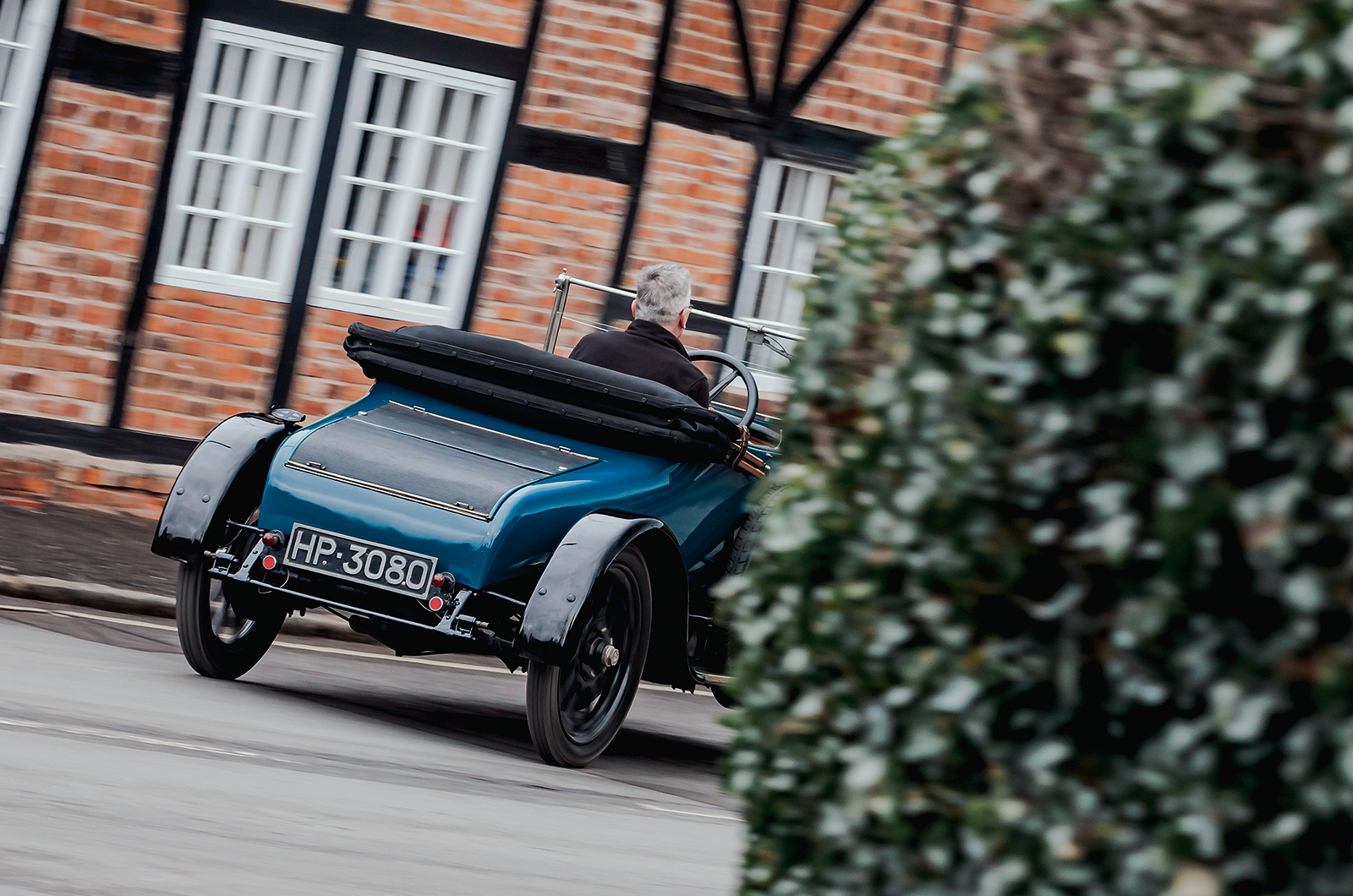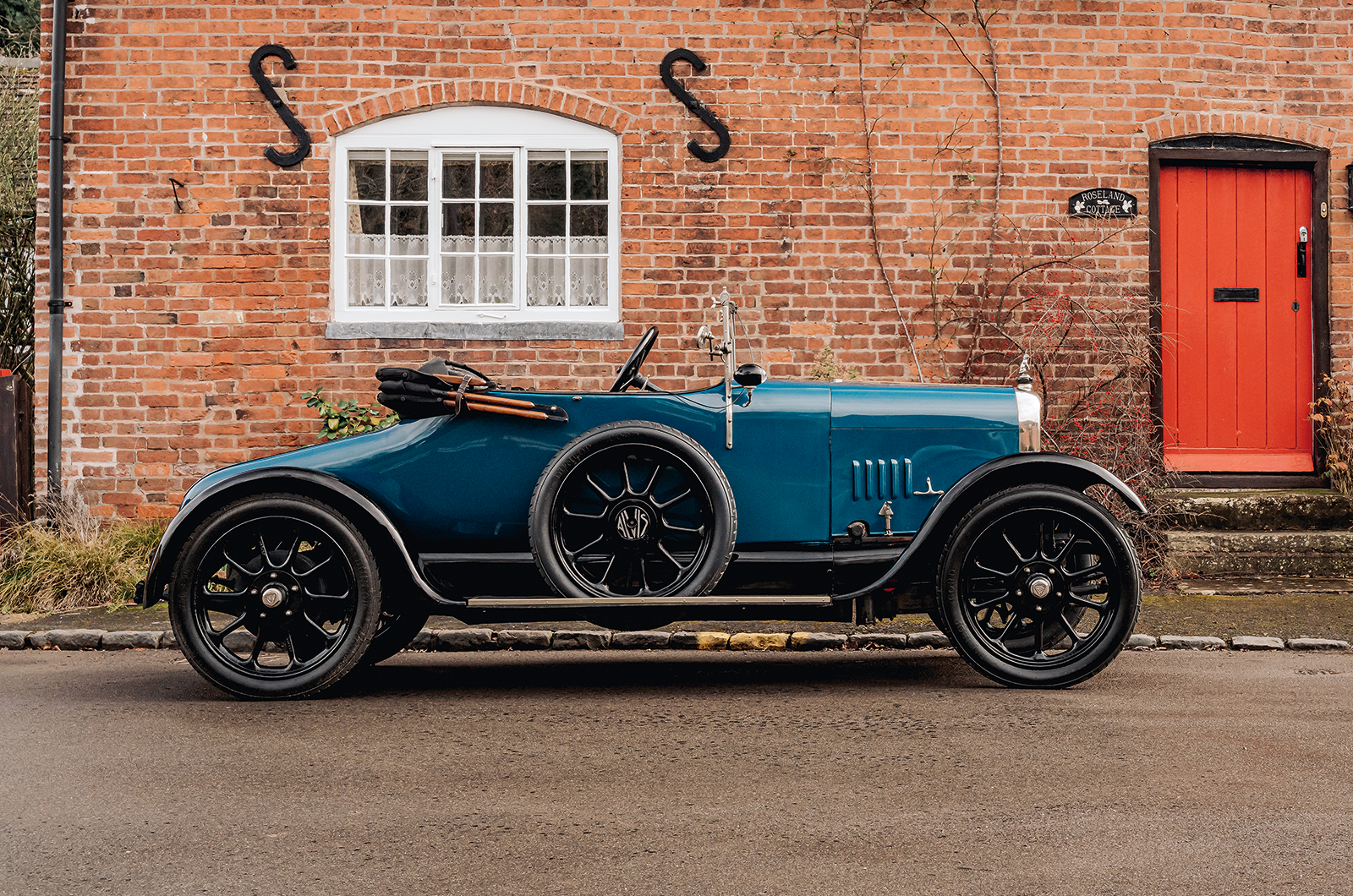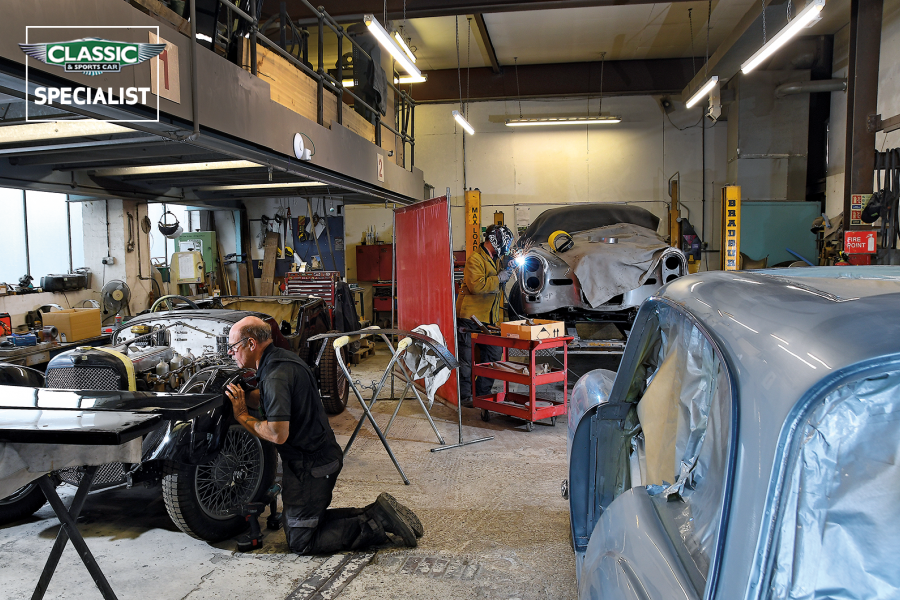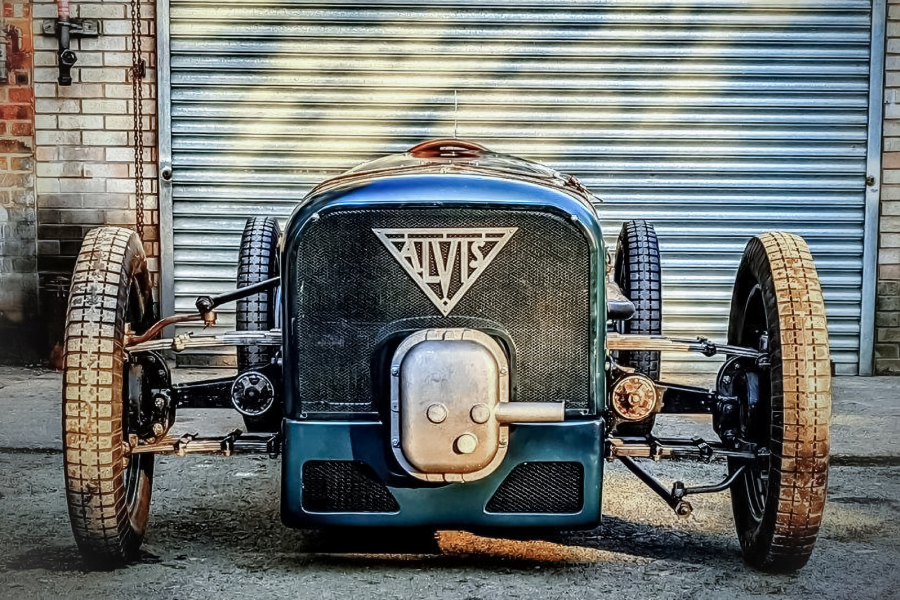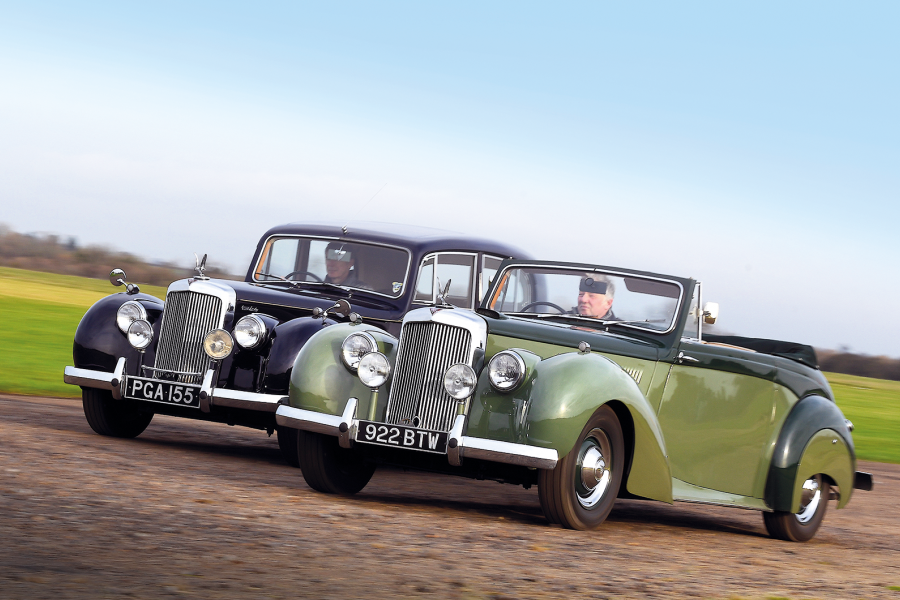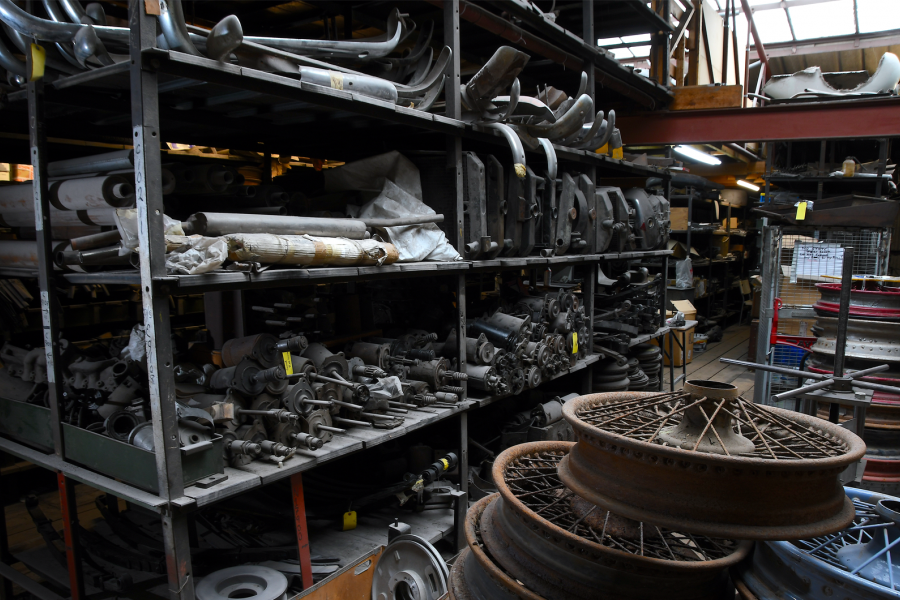A plate on the dash references TG John as the manufacturer rather than Alvis, further reflecting the youth of the marque.
The same is true of the aluminium water take-off atop the engine: it is stamped TG John on one side, Alvis on the other.
Another name stamped on the 10/30, Cross & Ellis, was responsible for the body, which is a delicate wonder.
It’s a handsome if not especially sporty shape, but what particularly impresses is its slender windscreen, fine wood-embellished hood frame and the quality of its aluminium panels.
The riveted leather drive belt
A strict two-seater in the main cabin, it boasts a well-concealed dickey seat in the rear, with room for one adult or two children, complete with a stirrup-like footrest mounted on the rear wing for stepping into the seat.
The famed Alvis hare radiator mascot is present on this early car, too, echoing the Coventry marque’s emphasis on lightness.
It’s not quite all original, though – this car is nearly 100 years old, after all – and one particularly entertaining retrofit is the single windscreen wiper.
One side of the 10/30’s engine has ‘Alvis’ script, whereas it says ‘TG John’ on the other side
A lever on the side of the bodywork pulls on a bicycle brake cable that provides just one wipe on the upper glass pane.
Having this device fitted does prevent the glass from being rotated into its open position, however, which was the original solution in the 10/30 – and many of its contemporaries – to the problem of rain.
Better to be wet than unable to see, right?
Alan also suspects that, while the brackets for the auxiliary lights are original, the lights themselves wouldn’t have been fitted by the factory for competition work, so are likely later additions.
Gearshift aside, the Alvis is an easy car to drive
While Alvis was certainly economical with the truth concerning this ‘privateer’ 10/30, the model’s success over the spring and summer of 1922 was transformational for the company.
Not only did it earn the 10/30 a reputation as a fine car for the middle classes, selling strongly considering Alvis’ limited production capacity and even more limited distribution network, it also started the marque’s racing programme.
In 1926, Alvis entered the first wholly British-built car at that year’s inaugural British Grand Prix, and in 1928 it was the first team from the UK to win the 1½-litre class at Le Mans with a front-wheel-drive car.
This almost forgotten model is the progenitor of both the road and racing traditions of Alvis, and it’s a thrill to find such an original survivor.
Images: Max Edleston
Thanks to: Red Triangle
Factfile
Alvis 10/30
- Sold/number built 1920-’23/619
- Construction steel ladder chassis with aluminium/tinned-steel body over ash frame
- Engine all-iron, sidevalve 1460cc ‘four’ with aluminium pistons, single carburettor
- Max power 30bhp @ 3500rpm
- Max torque n/a
- Transmission four-speed manual, no synchromesh, RWD
- Suspension semi-elliptic leaf springs f/r
- Steering worm and wheel
- Brakes rear drums only
- Wheelbase 9ft 2in (2794mm)
- Weight 1560Ib (708kg)
- 0-60mph n/a
- Top speed 60mph
- Mpg 33
- Price new £550 (1922)
- Price now c£75,000*
*Prices correct at date of original publication
Enjoy more of the world’s best classic car content every month when you subscribe to C&SC – get our latest deals here
READ MORE
Rolls-Royce Phantom III: excellence at all costs
Vauxhall 30-98 Wensum: The Yellow Peril
The unique Wolseley that surprised the boss
Charlie Calderwood
Charlie Calderwood is Classic & Sports Car’s Features Editor
